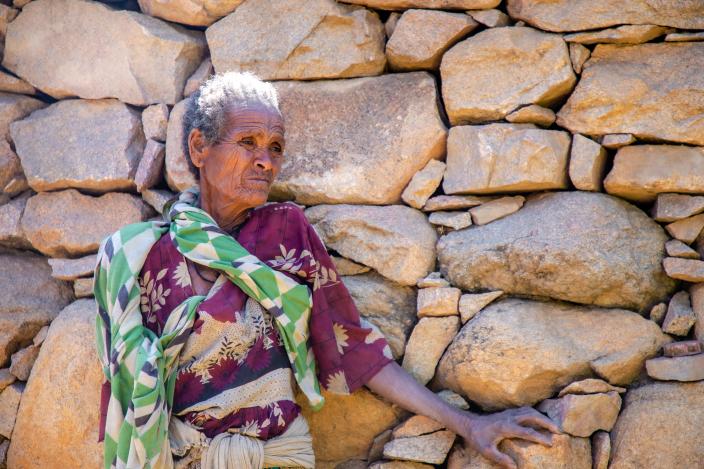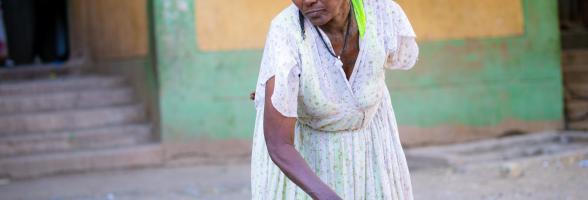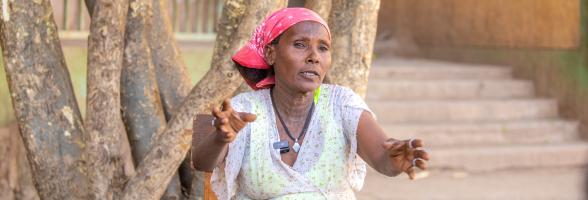In the mountains of Tigray region in northern Ethiopia, Tadelech Gebrihet has lived for 60 of her 70 years in Kola Tembien, about 100 kilometers west of the region’s capital Mekele. “I enjoyed a happy life before the conflict,” she says, sitting in the sun, outside her stone house, remembering the happy days where she used to farm and grow cattle. That was before the conflict broke out in Tigray, in 2020.
The armed groups burned all her crops and stole her 50 goats including most of her possessions. “Both of my sons were killed during that time,” she says.
Tadelech struggled to support her family of five after the war. For a while, she received government food aid every three months, which was far better than in the past when she was fending for herself amid violence and drought in her home region. But this support has to an end because of the conflict.
Now, she relies on help from her children. “My children now go round, begging, doing menial jobs just so we could get food and I sit at home taking care of my two grandchildren until they come. We are enduring hardship, primarily in need of food.” she says.
Ongoing crisis in Tigray
Sadly, Tadelech is not alone. The ramifications of the conflict reverberate through widespread displacement, acute food insecurity, and a lack of access to essential services, casting a particularly heavy shadow across this vast region. Women and children bear the brunt of physical and psychological trauma.
Tadelech’s hardships, clearly visible when I visited the home she shares with her three grandchildren in Tigray, is unfortunately typical of what so many people in northern Ethiopia are facing now. Since the conflict in Tigray began in 2020, and spread to nearby Afar and Amhara regions, the humanitarian situation has deteriorated significantly.
The agricultural fields in Tigray that once promised abundance now lay fallow. Dry conditions in some areas and an upsurge in desert locusts in others have affected the ability of farmers to produce crops and raise livestock.
Ever since the end of hostilities in late 2022, rainfall continued to be erratic leaving 3.5 million people in Tigray in urgent need of food assistance.
Nearly 400 people -mostly children and elderly - have already died of starvation just over the last six months, as over 1 million people face acute hunger. Oxfam estimates that two out of three people are facing hunger in this part of Ethiopia.
Providing Aid amid challenges
There’s no doubt that Tigray is a region facing many challenges — it has limited resources, strained healthcare facilities. Women in particular bear physical and mental scars of a brutal conflict. The conflict in Tigray was marked by widespread sexual violence endured by women and girls. For groups like Oxfam and our partners here, it is a relentless struggle to deliver humanitarian aid.
Oxfam is working closely with partner groups based in Tigray, and in neighboring Afar and Amhara regions, to provide assistance to people displaced by the conflict and who now struggle to survive the drought. Together, we are helping them with clean water, dignified sanitation facilities, and hygiene items like soap that help them keep clean and avoid diseases. In addition to maintaining and improving water systems, Oxfam was able to distribute food in two areas of Tigray in August and September 2023 – but communities need much more.
Since the onset of conflict, Oxfam has also played a critical role in providing comprehensive Gender Based Violence (GBV) care, including strengthening capacity of the GBV service provider through material support and trainings, direct cash voucher assistance to GBV survivor as well as protection kits such as food,matress, blankets, dignity kits among other support.


